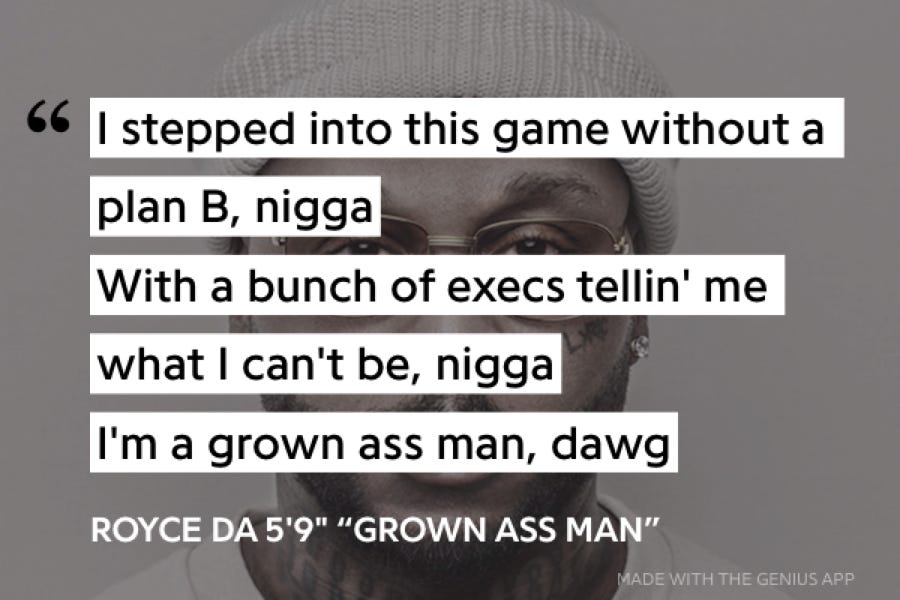INTERNATIONAL DEVELOPER AGREEMENTS
Deal Points and Negotiation Tips for Software Developer Agreements
Welcome to Paper Weight. This is a new section of my newsletter Spin the Block, where I take dives into the specifics of contracts, commercial arrangements, and business strategy. It’s also a play on the concept of a “paper weight”.
You know, something that just sits there.. the way (many) people look at (most) lawyers.
In this edition, I’m taking a look at international developer agreements. I recently had a conversation with a healthcare provider here in the United States who’s working on a health tech app. She doesn’t have any technical experience nor expertise, and so she contracted with a firm in Nigeria to outsource the development of her app.
There are several reasons why she’s doing this: lower cost, technical expertise, familiarity; etc. But I find it fascinating that as we’re seeing Afrobeats rise, we’re also seeing a rise in investment and tech startups in Africa as well. “Streaming of Afrobeats music has increased by 283% since 2019, according to Spotify.” Reuters also recently reported, “while African startups still attracted just a small fraction of the $445 billion invested globally, the continent has seen steady growth, propelled largely by investments in financial sector companies. The sector accounted for 31% of deal volume and 42% of deal value in 2022.”
Of course there has been a trend, for some time, to seek investment, employment, and development opportunities across the world - whether we’re talking about India, Indonesia, China, South America; etc. Some people call it globalization; and it’s driven by diminished opportunities for investment growth in home countries, the large youth population of many countries around the world, and the relative low cost of employment and/or compensation in international regions.
Let’s get into it.
FAIR IS WHERE WE END UP
Ari Emmanuel, the CEO of one of the largest talent agencies (WME/Endeavor), once said - regarding business negotiations - “fair is where we end up”. Meaning, in his mind, there aren’t really any hard line rules about what makes a “fair deal”; and that a fair deal is determined by what you’re willing to agree to.
I get his perspective. For me, I generally look at contracts as having three pillars:
Legal
Financial
Operational
Legal Pillars are the legal ramifications backing this contract. Many people think you can just throw words on paper, which you can; but there are also laws which back those words. It’s all good when everything goes right; but it’s usually when things go left that people wish they had understood those laws - or hired someone who did. It’s a dirty secret of litigators that a significant portion of their work is due to poorly drafted contracts; and that’s something that entrepreneurs and business people should know - it’s much cheaper to do it right the first time than it is to try to fix it afterwards.
For example - representation and warranty clauses aren’t there for no reason. Violating a representation and warranties clause has specific remedies for the aggrieved party which are different from the indemnification clause; but we’ll get into that.
The Financial Pillar determines, of course, who gets paid what. For this reason, it’s important to have a concept of what you’re looking to get out of the deal; and what makes sense for each party. Many people ask lawyers to draft contracts without, first, establishing a proper business relationship (i.e., understanding the other party, what they do, how they can help, and what an optimal outcome looks like). Essentially, you need to reverse engineer the deal. When you know where you want to go, it’s much easier to draft a contract that contemplates compensation, equity, and other financial rewards and consequences. Often times, many legal advisors pull templates off the shelf without paying attention to the relevant and custom needs of their client. Sometimes a template works; but, often it doesn’t.
Along those lines, the Operational Pillar determines the obligations of each party. What is each party committing to do? What are your expectations? Not just legal jargon, what is the result that you want to see? I’ve found that many times parties and their attorneys only think about the legal pillar; when the second and third are, arguably, more important. It’s always best to start by thinking about why you want to do this deal, how it will help you further your aims, and what you want to get out of the deal. This is also important when we think about where you hope this deal gets you - what is your strategy after the deal term is over? What does success look like for you? This is going to inform the operational obligations we include in the deal.
Lastly, my #1 negotiation rule is don’t bluff. There are others which I’ll go into in a different article; but that one is important. I’ve always told clients, know what you’re willing to accept and what you’re not willing to accept - and stick to it. Of course, many don’t listen (or don’t even know). But if you have a clear vision of where you want to go, and the minimum you’re willing to accept to get there - then you’re 60% of the way there when it comes to negotiations.
Subscribed
DEAL POINTS
So let’s talk about the developer agreement. What is a developer agreement? Simply put, it’s an agreement where an individual or company contracts with a software developer or software development team to develop software for a specific commercial purpose.
A developer agreement will traditionally have the following clauses. This isn’t an exhaustive list, but it’s as concise as I felt it could be without boring you (or me) to death.
Subject Matter - This clause covers the scope of the software development arrangement. It will itemize what’s being created and for what purpose.
Services - This clause covers how the parties will operate in relation to the services; and what specific services will be provided - including any transfer and/or assignment of technology, intellectual property, and/or deliverables.
Term - This clause specifies how long the contract lasts, and when the contract is officially over. It’s important to note here that you may want certain terms such as IP or non-disclosure rights to continue even after the Term.
Compensation - Simply put, this clause covers how the parties are paid / will pay for the services
Intellectual Property - This clause specifies the rights of each party regarding the intellectual property created during the term; or used to develop and create the software. Specifically, what did you own before entering into the agreement, and who owns the new IP which is created over the course of the engagement?
Representations and Warranties - This clause specifies, among other things, that any IP used by the developer is owned by the developer; and that each party has the right to enter into the agreement. This clause is important because the parties are essentially promising what’s understood and true at the time of acceptance; and that if those promises turn out not to be true then they will protect each other and be liable for any damages that arise. An example of this is a developer representing and warranting that they own the rights to the tools and intellectual property that is used to create the software. If this turns out not to be true then the developer may be liable for, what’s called, direct damages - which means they would be liable to repay the contract price - the direct loss the other party suffered. Unless you limit these damages, they may also be liable for what’s called indirect and/or consequential damages. These are damages that flow indirectly from the loss you incurred due to the party’s violation of their representation and warranties; and could include loss of profits and reputation. That takes us to our next point.
Limitation of Liability and Indemnification - Without getting too deep, the limitation of liability clause limits each parties liability and the indemnification obligations. It determines, precisely, what each party will be responsible for. These clauses (as drafted by ChatGPT) often states something like:
“Party A agrees to indemnify, defend, and hold harmless Party B, its officers, directors, employees, agents, and affiliates from and against any and all claims, liabilities, damages, losses, costs, and expenses, including reasonable attorney's fees and court costs, arising out of or in connection with breach of contract, negligence, or intellectual property infringement.”
This basically means that Party A will be responsible, and pay, for any claims or damages that happen because of Party B’s actions related to breach of contract, negligence, or intellectual property. If Party B wanted to limit the potential liability, they would draft something like this:
The indemnification provided under this clause shall not exceed the amount paid or payable by [Party B] to [Party A] under the relevant agreement or contract giving rise to the indemnification obligation.
This means that any, lawfully excluded, damage can’t exceed the price paid under the contract. Often times you’ll see businesses counter with an increase of the LoL (yes, the limitation of liability clause is abbreviated like that) limit to a multiple, such as 2x or 3x, of the amount paid; or limit it over a period of time (such as the previous 12 months from which the claim arose); or even carve out certain damages (such as intellectual property infringement). This might sound like boring legalese, but it can be detrimental if you don’t get it right.
Governing Law - This clause specifies which nation, state, and jurisdiction governs the agreement; and in the event of any dispute, how (and where) those disputes are resolved - whether in court or through arbitration. There are pros and cons to determining these factors, depending on which side you’re on, which country/state you live, and what those laws provide. Some countries and/or states are more business friendly, or simply more convenient, for certain issues and parties. Be sure to make sure that your lawyer understands and recognizes the implications.
Confidentiality - This clause will provide for (i) confidentiality, (ii) non-compete, and (iii) non-solicitation provisions. This means, in order, that the parties have certain obligations not to (i) divulge confidential information, and any learned trade secrets to third parties, which have been deemed confidential, (ii) seek to hire staff nor enter into business arrangements which directly compete or threaten the contracted business relationship, nor (iii) hire the staff members, agents, or contractors of each party
Employment Classification - This clause will categorize the type of engagement and the classification of the hired party; whether employee or independent contractor. It’s generally advisable to establish the relationship as an independent contractor relationship. This minimizes the liability concerns of the hiring party; it may also be advisable to utilize an employment of record service depending on your situation and the scope of work. But again, talk to a
paper weight; I mean attorney.
So these are some of the main points you want to think about when entering into a developer agreement, or any agreement for that matter. Developing your craft and having a vision for yourself, or business, is most important; but the contractual implications of your commercial agreements can’t be understated.
I’ve always looked at myself, and my affairs, in the same way. When I was deciding between going the ‘Big Law’ route or trying my hand at entrepreneurship and corporate work, I decided the latter fit me better - simply because I couldn’t see myself “signing a contract” with a big law firm for their terms and conditions. It’s the same thing, just a different game.
Until next time.




